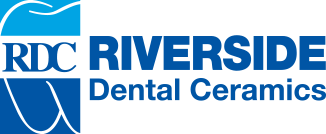Implant Restorations
Dentists offering their patients dental implant services need a lab with expertise they can depend on, and Riverside Dental Ceramics has assembled an experienced team of implant technicians to produce predictable, precise-fitting restorations, from CAD/CAM-produced custom abutments to implant crowns fabricated from the most durable, lifelike materials available, including BruxZir® Full-Strength, BruxZir Esthetic, Obsidian® Fused to Metal, and IPS e.max®.
At Riverside Dental Ceramics, we utilize state-of-the-art CAD/CAM technology to produce implant restorations that align precisely with the soft-tissue contours of your patients while establishing the natural emergence profile needed for a lifelike result. When you need assistance with your implant cases, our knowledgeable technical support team is available to help you achieve a predictable outcome your patients will love — no matter how challenging the restoration.
PRODUCT DETAILS
Indications
Indicated for missing teeth to provide a natural-looking emergence profile that ensures ideal soft tissue contours and abutment heights in the anterior or posterior region. Titanium abutments are commonly used in all regions of the mouth due to their strength. Zirconia abutments with titanium bases are used for the best possible esthetics; they are commonly used in the anterior and combined with all-ceramic or zirconia restorations. Screw-retained restorations are available for all areas of the mouth and are available in a wide range of material options.
Impression Requirements
Use manufacturer’s tooling to remove healing cap. For multiple units, start in the posterior and work toward anterior. Then, use manufacturer’s tooling to place transfer coping. Ensure components are fully engaged before tightening screw. Take an X-ray to verify proper seating of components. Next, ensure transfer coping does not hit tray. Use heavy body vinyl polysiloxane impression material. Record impression. Finally, when impression tray is removed, the transfer coping stays in the mouth. Remove transfer coping and replace healing cap. For multiple units, start in anterior and work toward posterior. Check fit of impression coping into impression. Send to lab.
Recommended Cementation
- Seat abutment or screw-retained crown. Torque screw into place per manufacturer’s recommendations. Next, use composite or another suitable material to fill over the implant screw. Cement restoration over implant with a resin-reinforced ionomer (e.g., RelyX, 3M ESPE) as applicable.
ADA Codes
- D6057 Custom Abutment

